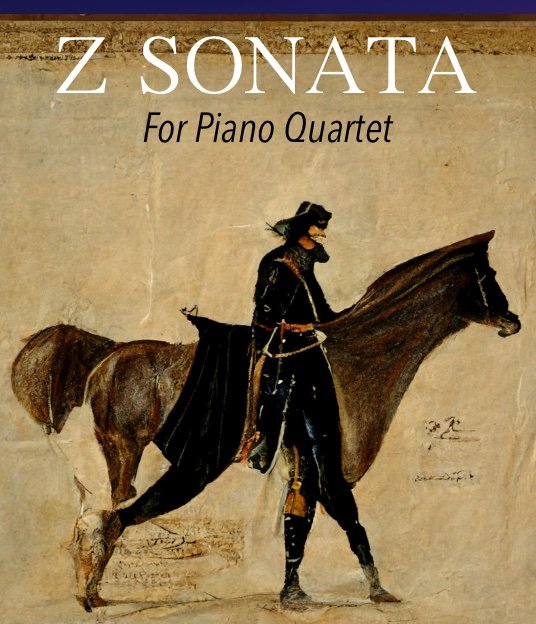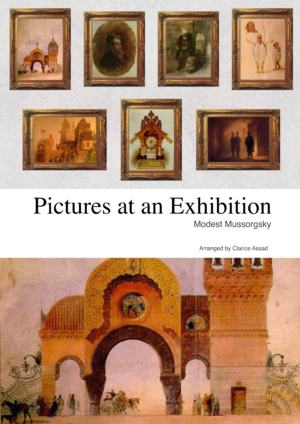Z Sonata
Original price was: $50.00.$45.00Current price is: $45.00.
Z Sonata for Piano Quartet (c.a) 15 minutes was commissioned by the Ocean Reef Festival. A work in 4 movements: I. Don Diego de La Vega, II. Pasodoble, III. Lolita Pulido, IV. La Mascara del Zorro. A four movement work inspired by the pulp fiction character ZORRO, created by Johnston McCully in 1919. Don Diego de La Vega, the man behind the mask, was a Californian nobleman of Spanish descendence. Preoccupied with social inequalities, he felt torn between the harsh differences between the rich and the poor, and eventually became “Zorro”: Hero of the people, a fox-like creature and sword master who fought for the rights of the less privileged, often publicly humiliating their opressors.
Z Sonata for Piano Quartet (c.a) 15 minutes
Z sonata is a four movement work inspired by the pulp fiction character ZORRO, created by Johnston McCully in 1919. Don Diego de La Vega, the man behind the mask, was a Californian nobleman of Spanish descendence. Preoccupied with social inequalities, he felt torn between the harsh differences between the rich and the poor, and eventually became “Zorro”: Hero of the people, a fox-like creature and sword master who fought for the rights of the less privileged, often publicly humiliating their opressors.
The piece begins exploring Don Diego de La Vega’s duality. His lavish lifestlye as a nobleman clash with his obsessive thoughts about helping others. In this movement, the man fantasizes about becoming Zorro, but does not become it. This is the most romantic movement, aiming to evoke the lyricism of the early Romantic period in which Zorro existed. During this time, the 1820-40’s, California was under Mexican rule.
The second and third movement revolve around his love interest, Lolita Pulido, whom he meets during a dance in a costume party dressed as Zorro. The music borrows an exotic soundscape, reminiscent of Mexico and Spain, as the two embark on a clumsy pas de deux. A beautiful lady of noble descent, Lolita Polido is immediately taken by Zorro’s misteriousness and charming personality, falling in love with the character, rather than the man himself. This helps Diego de La Vega’s mind in fully embracing his new identity. The fourth and final movement explores Zorro’s adventures in his fully formed persona – a character who has been of great inspiration to artists of all mediums: visual artists, writers, film makers, actors and musicians throughout several generations.
INSTRUMENTATION
Violin
Viola
Violoncello
Piano
Movement Titles
I. Don Diego de La Vega
II. Pasodoble
III. Lolita Pulido
IV. La Mascara del Zorro





